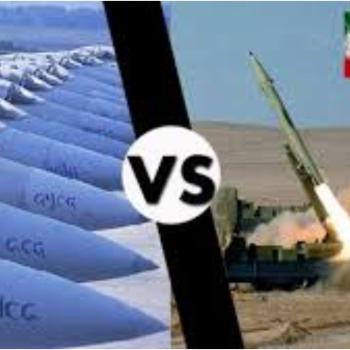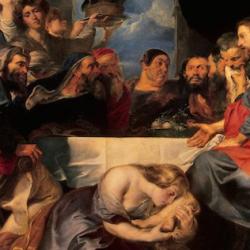INTRODUCTION
Advent (the word means ?coming?E focuses our attention on the incarnation of the Son of God, but the incarnation of the Son of God not only tells us about the Son. The Son became incarnate so that He could reveal God to us, all of God, Father, Son and Spirit. This Advent, we will be exploring how the incarnation of the Son reveals the Trinity, and what the Trinity means for us.
THE TEXT
?Now in the sixth month the angel Gabriel was sent by God to a city of Galilee named Nazareth, to a virgin betrothed to a man whose name was Joseph, of the house of David. The virgin?s name was Mary . . . .?E(Luke 1:26-38).
NEW CREATION
Before looking at this passage for what it teaches us about the Trinity, and our life in the Trinity, we should note a number of biblical allusions in the passage. First, the story begins with the angel Gabriel being sent to Mary, as he was to Zacharias (1:11, 19). The only time the angel Gabriel appears in the OT is in the book of Daniel (Daniel 8:15ff; 9:20ff). He appears again to Zacharias and Mary to announce the fulfillment of the visions and prophecies that He delivered in Daniel?s day. The ?seventy weeks?Eor the ?times of the Gentiles?Eare coming to a close, and a new age is coming.
Second, Gabriel says that Mary will be ?overshadowed?Eby the Holy Spirit, who will form the ?Son of the Most High?Ein her womb (Luke 1:32, 35). Two OT passages are in the background here. In the original act of creation, the Spirit ?hovered?Eover the waters in order to order the watery darkness (Genesis 1:2). Now the Spirit again hovers, this time over the womb of Mary where a new creation is taking shape. This gives us an insight into the point of the virgin birth: It shows that the new creation does not come through human effort or human creativity. The new creation, like the old, comes through a sovereign act of the Spirit.
This ?overshadowing?Ealso alludes back to Exodus 40:34: ?Then the cloud covered the tent of meeting, and the glory of Yahweh filled the tabernacle.?E By overshadowing the tent, the glory-Spirit of Yahweh consecrated the tent as a holy place, just as the Spirit?s overshadowing of Mary produced a ?holy thing begotten?E(Luke 1:35). Luke, like John, believes that Jesus is the tabernacle, the earthly dwelling and location of the glory of God (cf. John 1:14).
Third, Mary also fulfills all the types and shadows of barren women in the OT. Through the miracle-motherhood of Sarah and Rebekah and Rachel and Hannah, the Lord foreshadowed the eventual fulfillment of the promise of Genesis 3:15 in the miracle-motherhood of Mary. The connection of Mary?s pregnancy with Genesis 3:15 is underscored by Elizabeth?s later greeting to Mary, ?Blessed among women are you?E(Luke 1:42), which echoes Deborah?s song: ?Most blessed of women is Jael, the wife of Heber the Kenite, most blessed is she of women in the tent?E(Judges 5:24). Jael is blessed, of course, because she smashed a tent peg through Sisera?s skull. Through her Son, Mary does the same.
THE FATHER?S SPIRIT OF SONSHIP
From a Trinitarian perspective, the ?oddity?Eof Luke 1 is that the Son comes from the Father through the Spirit. Our creeds, growing out of Matthew 28:18-20 and other biblical texts, speak of the order of the Trinity as ?Father, Son, Spirit,?Ebut Luke 1 suggests that it is equally biblical to say ?Father, Spirit, Son.?E Jesus?Ebaptism (Luke 3:21-22) points to the same conclusion, especially the fact that the Father?s words allude to Psalm 2 (?Today I have begotten You?E at the same time that Jesus receives the Spirit. This doesn?t mean that Jesus was not God the Son prior to His baptism; but the public declaration of His Sonship occurs at His baptism, when He receives the Spirit. And some of Paul?s statements about the resurrection show that the Father raises the Son from the dead through the Spirit (Romans 1:4; 8:11). In John?s gospel, Jesus is the one ?born of the Spirit,?Ewhose voice is heard but whose origins and destiny are unknown (John 3:5-8).
Since God reveals His inner life in the economy of redemption, these events give us some insight into the inner life of God. The Father, according to Scripture and the creeds, eternally begets the Son; the Son is the ?only-begotten of the Father?E(John 1:14). But if the incarnation reveals the relation of the Father and Son, we can say that the Father eternally begets the Son through the Spirit. The Spirit is the Love by which the Father begets the Son, and the Love through which the Son loves the Father. Since the Father is the Father only because He has a Son, we might even say that the Spirit through whom the Father begets the Son makes the Father the Father, even as, being the agent of begetting, He makes the Son the Son.
SO WHAT?
What does it matter? We can answer that question by noting the similarity between this Trinitarian pattern (the Father begets the Son through the Spirit) and the pattern of our redemption. Paul frequently teaches that we have received the Spirit so that we can be conformed to Christ the Son. Through Jesus, God has delivered us from the flesh and from death, to live in the Spirit (Romans 8:9). The Father raised us through the Spirit to a new life (Romans 7:6; 1 Thessalonians 4:7-8). The Spirit is the ?spirit of Sonship?Ethat enables us to join in Jesus?Eaddress to His ?Abba?Eand conforms us to the life of the Son (Galatians 4:4-8). Through the Spirit, we are made sons, and if sons, then heirs. Through the Spirit, we are brought into the Triune community as sons, or, to change the image, as the bride of the Son.
In short, the order of the Trinity is revealed not only in the interrelations of the Persons, but in our redemption. The Father who eternally begot the Son through the Spirit now begets sons from sinners through the same Spirit. The incarnation is the presupposition and revelation of this pattern of redemption, and it shows that our salvation is not accidental or arbitrary, but is rooted in the very life of the Triune fellowship.















